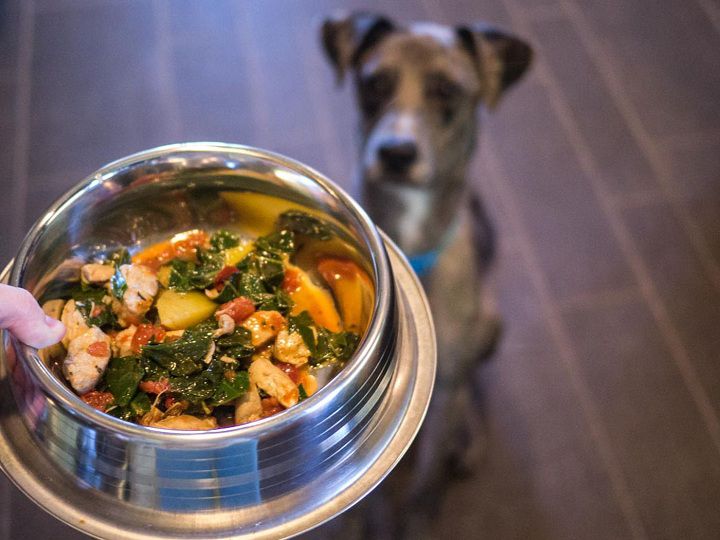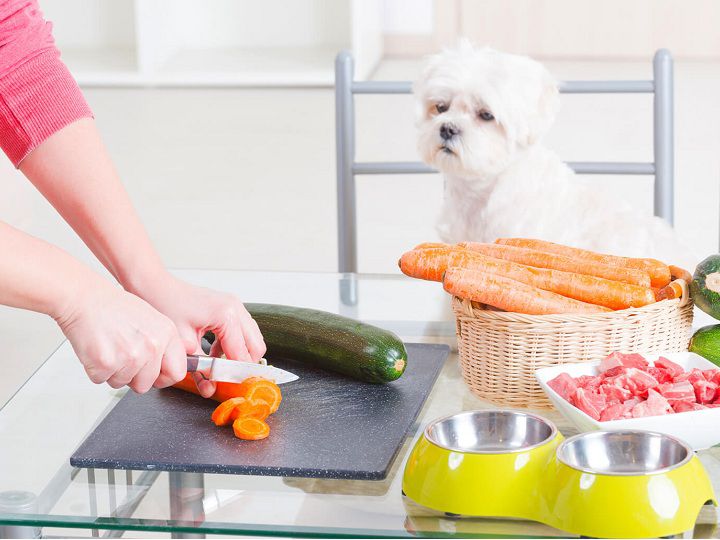Over the last decade, human diets have shifted from eating convenient, processed food back to a real diet made from fresh, wholefood ingredients. Yet when it comes to our canine companions, most people are still feeding their dogs a diet that is largely made up of highly processed dry dog food. Like humans, it turns out that when dogs eat real food made from fresh ingredients they thrive! Dogs on a fresh food diet tend to have shinier coats, improved digestion, increased energy and a boost in their overall health & wellbeing.

Why then do so many of us still feed our dogs a diet of only dry dog food? Well, in the first instance there’s a lot of information out there about different feeding options and products for your dog which can be confusing and at times, contradicting. So how can you figure out what is the best diet for dogs? As simple as it sounds, a good place to start is with the basics (and a little bit of common sense) – a balanced diet of natural, wholefood fresh meat and vegetables (taking into consideration that there are some human foods that dogs can’t eat – but more on this later!).
Another key consideration when switching to a real food diet for dogs is to make sure that your dog’s food meets their nutritional requirements. Compared to humans, dogs need a different ratio of macronutrients, vitamins and minerals in order to have a nutritionally complete diet which can make feeding fresh a little trickier. So if you’re ready to switch your dog to a diet made from real ingredients, we’d recommend buying food from companies that prepare fresh food meals for dogs that are already nutritionally balanced & complete (because this can be tricky to manage yourself). If you’re not quite there yet, a great way to start feeding real food is by substituting up to 10% of your dog’s daily calorie intake with dog-friendly fresh food and snacks.
To help you start your journey of feeding real food, we’ve provided a list of the best real ingredients to incorporate into your dog’s diet.
Real protein from known animal sources
Fresh meat is one of the best real ingredients that you can add to your dog’s diet. The easiest form of meat to add is fresh mince – preferably human-grade so you can be sure of exactly what parts of the animal you are feeding your dog. Dogs can eat fresh mince from a wide variety of animal sources including beef, chicken, turkey, lamb or duck, to name a few.
Another great source of real ingredients from animals is organ meat – in particular liver, heart and kidney. Organ meat is a great nutrient rich source for dogs however we recommend introducing it slowly to your dog’s diet given it is rich in nature and can sometimes upset their tummy if fed too much too quickly.
Eggs are also a great addition to your dog’s diet. They are a complete source of amino acids (a building block for protein) and a great source of linoleic acid and Vitamin A. Eggs are one of the easiest snacks / treats to add to your dog’s diet and dogs tend to love the taste and texture.
Fresh meat & eggs can be fed raw or if you’re worried about the risk of bacterial contamination, you can lightly cook these ingredients prior to feeding which will preserve nutritional integrity while removing any risk of bacteria.
Bones
Fresh, raw meaty bones are a great option to feed your dog once or twice a week. Bones are very healthy for dogs and can also provide mental stimulation as your dog chews away at them. When it comes to bones, always feed them raw (never cooked as it can cause the bones to splinter and cause internal injuries for your dog). It is also recommended that you feed a bone that is large enough so that it can’t be swallowed whole by your dog and always supervise your dog when feeding them bones. Depending on the size of your dog, some good options include:
- Chicken bones (necks, wings, thigh)
- Lamb bones (rib)
- Beef bones (tail)
- Turkey bones (necks)

Vegetables
Despite popular believe that dogs descended from wolves, latest research shows that domestic dogs have evolved alongside humans over a period of 35,000 years and as a result, have evolved to eat plant-based materials. In fact, not only can dogs digest vegetables & fruit, it turns out that feeding the right type of vegetables & fruit can add a lot of nutritional value and natural fiber to your dog’s diet. Some great vegetables to feed your dog include:
- Carrots (raw or lightly cooked)
- Broccoli (raw or lightly cooked)
- Celery (raw)
- Sweet potato (lightly cooked)
- Pumpkin (lightly cooked)
Fruit
Fruit is a great, low-calorie snack option and most dogs tend to love the sweet taste. They’re also easy to prepare as most fruits can be fed fresh and raw. Some good fruit options to feed your dog include:
- Blueberries
- Bananas
- Apple slices (remove the core and all seeds as they can be poisonous for dogs)
- Watermelon (remove the rind and all seeds as they can be dangerous for dogs)
When it comes to some of the larger fruits such as apple and watermelon, just be careful to cut the fruit into appropriate sized pieces for your dog so that they don’t choke on them.
Human foods to avoid feeding your dog
While dogs benefit from a lot of the same real food ingredients that are also great for humans, there are some ingredients that can be harmful to their health so be sure to research an ingredient thoroughly before adding it to your dog’s diet. Some common real human foods that you should never feed your dog include avocados, grapes, onion, garlic or chocolate. These foods tend to be poisonous when consumed by our furry friends so its best to avoid feeding these.
While it can be sometimes daunting to figure out what food is best for your dog, a great place to start is by replacing up to 10% of your dog’s daily calorie intake with our suggestions above. Even a small amount of real food can have a meaningful impact and will boost your dog’s overall health & wellbeing!
